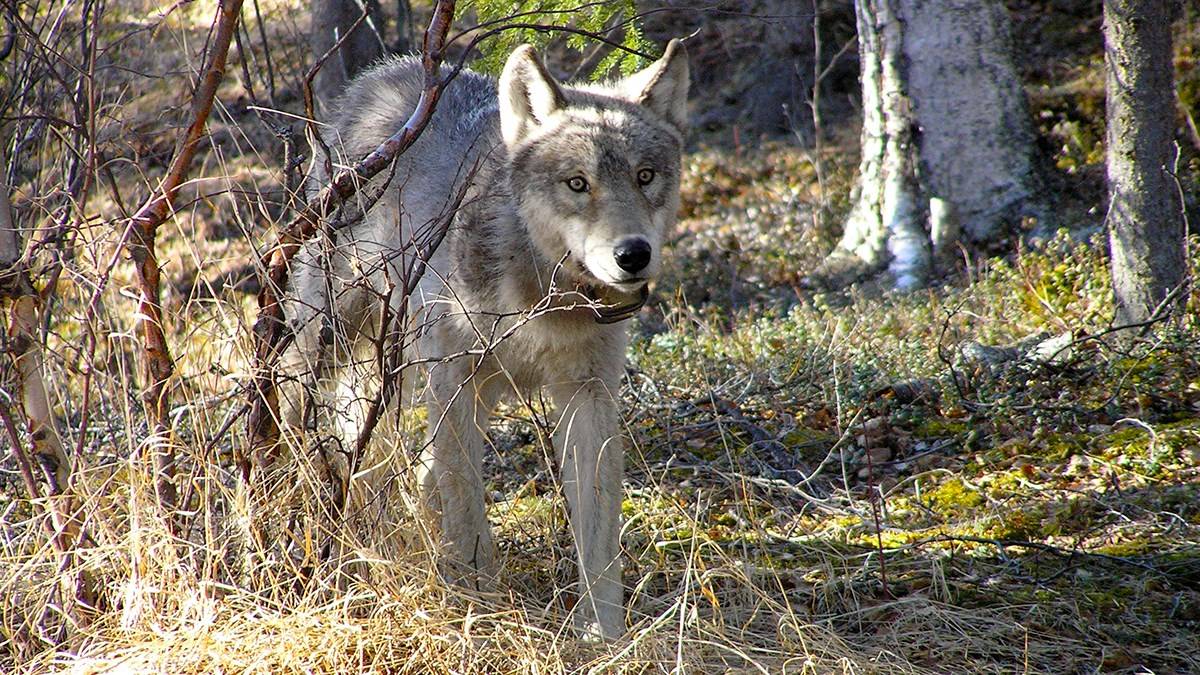Deep within Lake Clark National Park and Preserve, staff at a remote ranger station on the north shore of Telaquana Lake noted something amiss. Wolves, a mighty apex predator of the park, were seen scraping fish carcasses from the ice.
Though odd, the observation made sense. Wolves are opportunists and Lake Clark, situated at the headwaters of Bristol Bay, is flush with fish. Likewise, salmon make a relatively safe dinner. While moose fight back and can break a wolf’s legs, salmon simply flop or freeze.
Still, as one of the park’s top predators, wolves affect the balance of everything in the ecosystem. Seeing a wolf scrounging for salmon in an ice block raised a few eyebrows about the ecological balance of the park.
“It kind of prompted this question of how frequently is this happening and what’s going on,” explained Ashley Stanek, who studied wolf diets in Lake Clark for her graduate thesis in biology at University of Alaska Anchorage (UAA). The results of that collaborative project between the National Park Service, UAA, and UAA’s Environment and Natural Resources Institute were published in the Canadian Journal of Zoology in 2017, with Stanek as the lead author.
Lake Clark biologists were already surveying the park’s wolf population at the time of the initial observation, so they expanded their research to see what wolves were eating as well.
“Since we’re at the headwaters of Bristol Bay, in a really rich region for salmon, the expectation was that there could be, or likely would be, some salmon use,” noted Buck Mangipane, the park’s chief of natural resources, who worked on the study as a wildlife biologist.
The first step was simply finding the wolves, which park staff accomplished by flying over wolf tracks starting in 2008 and continuing through 2012. Over the course of four winters, they scanned a third of the four-million-acre park, darting 22 individual wolves and outfitting each with a tracking collar. Once collared, park staff could relocate wolves and, when possible, collect fur and blood samples multiple times during the course of the five-year study.
These fur and blood samples arrived in UAA’s stable isotope lab, where Stanek and her postdoctoral colleague Dr. Nathan Wolf – now a professor at Alaska Pacific University – parsed the samples for indicators of salmon diet.
Salmon, like many species, can be identified by a unique ratio of elemental isotopes like carbon and nitrogen. When a wolf eats a salmon, its isotopic values are incorporated into the wolf’s bones, blood, fur and even breath. Each strand of hair, for example, can identify the types of food a wolf ate while growing that fur during the summer and fall. This study technique, called stable isotope analysis, allowed biologists to see how salmon played a role in each wolf’s diet.
Stanek and her team compared the Lake Clark wolves against a control group at the Alaska Zoo. The captive wolves were first fed a uniform beef chow to balance internal chemistry, then switched to a 70-day diet of strictly salmon. By looking at weekly changes in the wolves’ blood samples, they determined that blood serum records two to four weeks of diet, while blood clots can record up to four months.
Knowing both the chemical signature of salmon and the lengths of time recorded in wolf tissue, the research team could identify what percentage of each wolf’s diet came from fish during different years.
The results were incredibly varied. One wolf ate up to 89 percent salmon in a season while elsewhere in the park another ate only one percent. Wolves, it appeared, have preferences.
However, there was evidence that wolves affect each other’s habits. Through the tracking collars, the biologists could pinpoint when certain wolves traveled together. They observed that, when in a group, wolves ate a similar amount of salmon as their companions. Their diets diverged again when they separated. These trends appeared often, but not enough to identify a trend given the relatively short five-year timeframe.
“Between seasons it was so variable and it was really hard to put that story together,” Stanek said of the results. But, she added, the data weren’t surprising. “They’re going to take advantage and do what’s makes sense for them at that point in time.”
Though the GPS records showed wolves moving expansively — one walked nearly to Bethel, 215 miles away — they rarely left salmon-spawning regions.
“You imagine this influx of an amazing resource that provides great nutrition that’s essentially safe for a wolf to capture,” said Mangipane. “The fact that several of those packs really didn’t show evidence of using salmon was kind of interesting, and one of the questions I think would be interesting for future research.”
Stanek, lead author on the project, is now a wildlife technician for the National Park Service, and spent her summer in Glacier Bay National Park and Preserve. She’s preparing the team’s Alaska Zoo research for publication this winter, adding another boost to her early career, which started in her hometown of Anchorage.
“Science is so collaborative. Anchorage is really nice because you have all the agencies here, so it really lends to collaborating,” Stanek said. “We have so many agencies doing such cool work all around the state, just within walking distance of [campus].”

